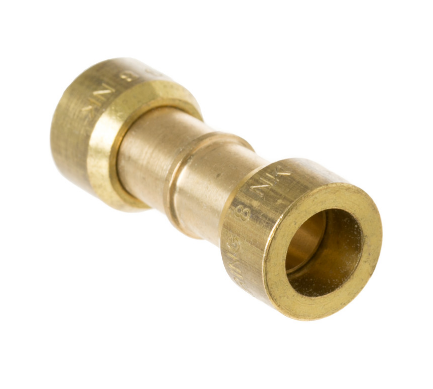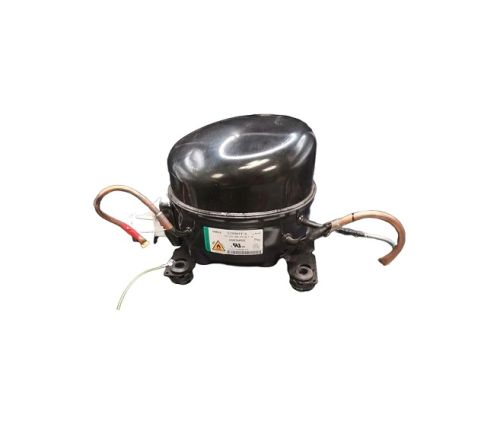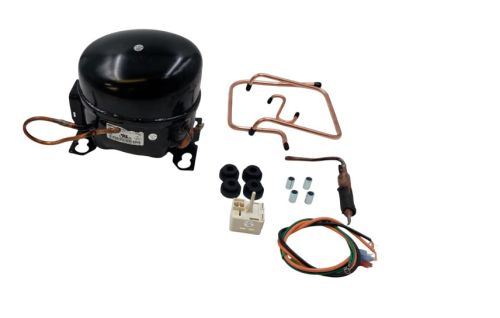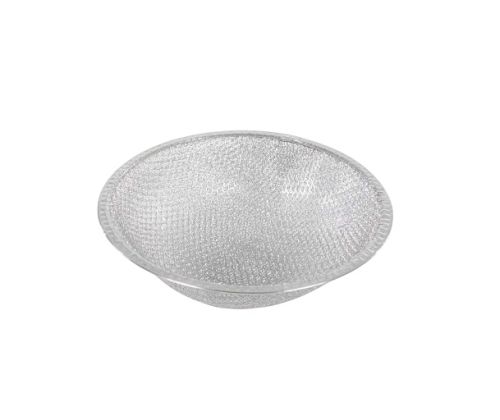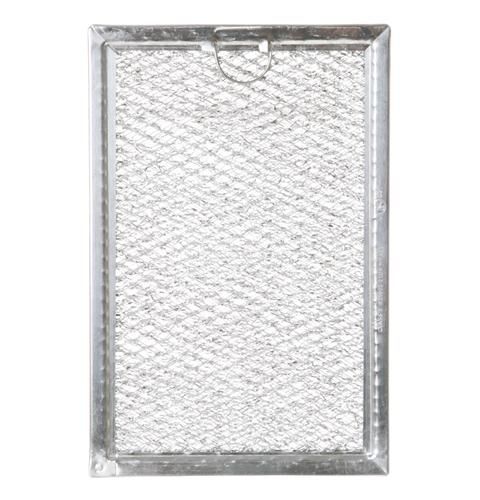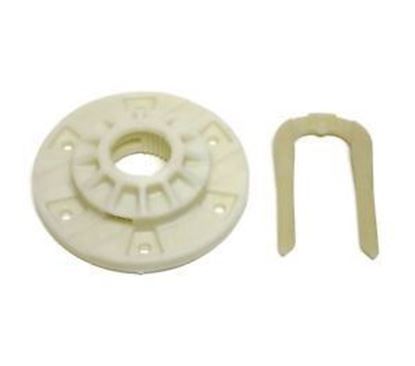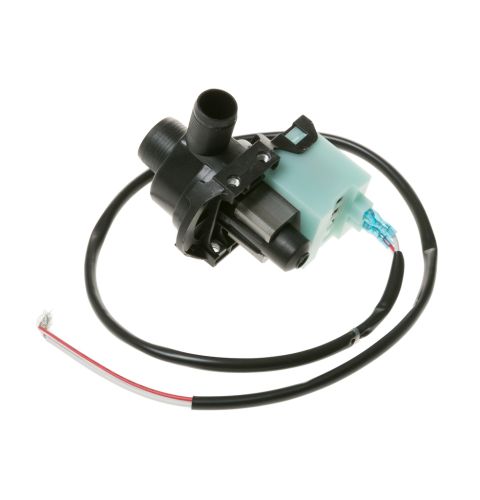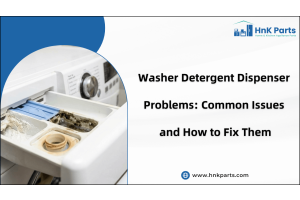
How to Clean a Washing Machine Filter: Know How Now
Keeping your washing machine in optimal condition is crucial for efficient laundry results. One often overlooked but essential component of a washing machine is the filter. The washing machine filter plays a vital role in capturing lint, debris, and other particles during the washing process, preventing them from clogging the machine and affecting its performance. In this step-by-step guide, let us explore the importance of maintaining a clean washing machine filter. Also, discuss how a clogged debris filter can impact the machine's performance, and provide you with a brief overview of the cleaning process.
Understanding the Washing Machine Water Filter
Filter for washer machine is an essential component that helps maintain the efficiency and longevity of your washing machine. Its primary purpose is to trap and prevent unwanted debris and particles from entering the various components of the machine, ensuring optimal performance and preventing damage. There are several types of filter for washer machine.
The first is the lint filter, also known as a trap or screen, which captures lint, fibers, and other small particles from the laundry. This filter is usually located near the agitator or drum and requires regular cleaning or replacement. The second type is the pump filter, which is responsible for capturing larger items such as coins, buttons, or lint clumps that may clog the drain pump or drain hose. Cleaning this filter periodically is crucial to prevent drainage issues and maintain proper functioning of the washing machine. Lastly, some washing machines feature inlet filters, which are designed to trap sediment, dirt, and other contaminants from the water supply. These filters safeguard the machine's internal components from potential damage caused by impurities present in the water.
Buy top-quality filters for washing machines and other home appliance parts at HnKParts! We offer a wide selection of genuine parts from leading manufacturers like GE and Whirlpool. Whether you need a replacement filter, agitator, or drain pump, we have you covered. Shop with us for competitive prices!
Signs of a Dirty or Clogged Washing Machine Water Filter
We know over time, however, the washing machine filter can become dirty or clogged, leading to various issues that can affect the performance of your washing machine. It's important to recognize the signs of a clogged or dirty washing machine filter so that you can address the problem promptly and ensure your machine continues to work efficiently.
- Slow Draining: One of the most common signs of a dirty or clogged debris filter for a washer machine is slow draining. If you notice that the water is taking longer than usual to drain from the machine after a cycle, it could be an indication that the filter is obstructed.
- Foul Odors: Another telltale sign of a clogged or dirty washing machine water filter is unpleasant odors emanating from your washing machine. When the filter is not cleaned regularly, dirt, lint, and other debris can accumulate and create a breeding ground for bacteria and mold.
- Poor Cleaning Results: If you've noticed that your clothes are not coming out as clean as they used to, it could be due to a clogged or dirty washing machine filter. A blocked filter prevents the detergent and water from circulating effectively during the washing process.
- Increased Vibrations and Noise: A filter that is heavily clogged can disrupt the smooth operation of your washing machine. As water struggles to pass through the filter, it can create pressure imbalances and cause the machine to vibrate excessively or produce unusual noises during the wash or spin cycles.
- Error Codes or Malfunctions: Many modern washing machines are equipped with error code systems that alert you to specific problems. A clogged debris washing machine water filter can trigger error codes or even cause the machine to malfunction. If you notice error messages on your washing machine's display or if it stops working altogether, it's worth checking the filter as a potential culprit.
What Happens If the Filter on a Washing Machine Is Not Cleaned?
Neglecting washer filter cleaning can have several negative consequences. Here are a few potential outcomes of not maintaining a clean filter:
- Reduced Efficiency: A dirty or clogged filter restricts the water flow in your washing machine, which can lead to reduced efficiency. The machine may take longer to complete a cycle, use more water than necessary, and require additional energy to operate. This inefficiency can increase your utility bills and waste valuable resources.
- Damaged Components: A clogged debris filter can put excessive strain on various components of your washing machine. The pump, motor, impeller, and other mechanical parts may have to work harder to compensate for the reduced water flow, potentially leading to premature wear and tear. Over time, this can result in costly repairs or even the need for a new washing machine.
- Mold and Bacterial Growth: The accumulation of dirt, lint, and moisture in a dirty filter creates an ideal environment for mold and bacterial growth. These microorganisms can not only cause unpleasant odors but also pose health risks. If left unaddressed, the mold and bacteria can spread to other parts of the machine and contaminate your laundry.
How Often to Clean a Washing Machine Filter?
The frequency of washer filter cleaning depends on factors such as the type of washing machine and the amount of laundry you do. As a general guideline, it is recommended to clean the filter once every one to three months. However, if you notice any signs of clogging or if your machine is not draining properly, it is advisable to clean the filter more frequently to prevent potential issues.
Preparing for Washing Machine Filter Cleaning
Before diving into washing machine filter cleaning, it's crucial to prioritize safety precautions. First and foremost, ensure the machine is unplugged. Wear protective gloves to shield your hands. Additionally, prepare a bucket or a towel to catch any water that may spill during the process. Gathering the necessary tools that include a screwdriver, a soft brush or sponge, a mild detergent, and clean water.
How to Clean Washing Machine Filter?
Before we find out cleaning the washing machine filter, first let us find out where it is located.
where is the filter on my washing machine?
To find the washing machine filter location, consult the owner's manual. Typically, the filter will be located in one of these places:
- In the center agitator
- In the drum's top lip
- Behind a trap door on the front exterior of the machine
- Near the water pump or at the end of the drainage hose
Now that you know where the washing machine filter is located. Cleaning the washing machine filter is a simple task that can be done regularly to maintain the optimal functioning of your appliance.
How to Clean Washing Machine Filter that is removable?
Most washing machine filters can be removed for cleaning. Here's how to do it:
- Wipe Off the Filter: Remove the filter from its housing and gently wipe away lint and debris using a damp cleaning cloth.
- Clean the Filter Housing: Use a cloth to wipe lint and debris from the filter housing. Check for build up using a flashlight. Place a shallow basin or old towel to catch any water that pours out when you open the filter housing.
- Soak the Filter: Submerge the filter in a bucket, bowl, or basin filled with hot water and a small amount (about 1 tsp.) of dish soap or liquid laundry detergent. Let it soak for 10 minutes.
- Scrub the Filter: Use a soft-bristle brush, like an old toothbrush or dish brush, to scrub the filter and remove any buildup.
- Replace the Filter: Securely place the filter back into the washer's filter housing. It doesn't need to be dry since it will get wet again.
- Run a Short Wash Cycle: Run a short cycle to ensure the filter is securely in place. If you notice any leaks, remove the filter and reinsert it into its housing.
How to Clean Washing Machine Filter that is fixed?
Some washing machine filters are fixed in place and cannot be removed for cleaning. Here's how to clean them:
- Wipe the Filter and Housing: Open the filter housing and use paper towels to wipe away lint and debris. Place a shallow basin or old towel to catch any water that pours out when you open the filter housing.
- Scrub the Filter: Use a soft-bristle brush, such as an old toothbrush or dish brush, to scrub the filter and remove lint and debris buildup.
- Run a Short Wash Cycle: Run a short cycle to flush out the freshly cleaned filter.
How to Clean Top Load Washing Machine Filter?
Follow below steps to clean top loader washing machine filter:
washing machine filter location:
- Open the lid of your top loader washing machine and locate the filter. It is usually located near the agitator or at the bottom of the tub.
- Consult your washing machine's user manual if you're having trouble finding the filter as the exact location can vary depending on the model.
Remove the Filter:
- Depending on your washing machine model, the filter may be removable or fixed. If it's removable, carefully unscrew or unclip the filter to detach it from the machine.
- If the washing machine water filter top loader is fixed, use a soft brush or cloth to clean the debris without removing the filter. Be gentle to avoid damaging the filter or other internal components.
Clean the Filter:
- If the washing machine filter top loader is removable, rinse it under running water to remove any visible debris or buildup.
- For stubborn dirt or residue, you can use a soft brush or toothbrush to gently scrub the filter. Avoid using abrasive materials or harsh chemicals as they can damage the filter.
Check the Drainage Area:
- While the washing machine filter top loader is removed, take a moment to inspect the drainage area. Look for any accumulated debris or blockages and remove them carefully using a cloth or brush.
- Ensure that the drainage area is clear and free from any obstructions to allow proper water flow during the washing cycle.
Reinstall the Filter:
- Once the washing machine filter top loader and drainage area are clean, reattach the filter to its original position. Make sure it is securely fastened according to the manufacturer's instructions.
- Double-check that there are no loose parts or gaps around the filter to prevent leaks during operation.
Test the Machine:
- Plug in your washing machine and run a test cycle to ensure that everything is functioning correctly.
- Monitor the water drainage to confirm that it is flowing smoothly without any issues.
How to Clean the Washing Machine Filter Front Loader?
If you're unsure in cleaning the washing machine filter in your top loader, follow the step-by-step instructions below:
Locating the Filter:
- In most front load washer filter is typically located at the bottom front of the appliance behind a small access panel or flap.
- Look for a small tab or handle that you can pull or twist to open the access panel.
Opening the Access Panel:
- Gently pull the tab or handle to open the access panel. Be careful not to force it, as some models may have screws or latches holding it in place.
- If you encounter screws, use a screwdriver to remove them before proceeding.
Removing the Filter:
- Once the access panel is open, you should see the washing machine water filter.
- Depending on the model, the filter may be a twist-off type or have a release lever.
- If it's a twist-off filter, simply twist it counterclockwise to loosen and remove it.
- If it has a release lever, push or pull the lever as indicated to release the filter.
Cleaning the Filter:
- Carefully examine the filter for any visible debris, lint, or foreign objects.
- Gently rinse the filter under running water to remove loose dirt and debris.
- For stubborn or sticky residue, use a soft brush or toothbrush to scrub the filter gently.
- Ensure all the nooks and crannies of the filter are thoroughly cleaned.
Inspecting the Filter Housing:
- While the filter is removed, take a moment to inspect the filter housing for any debris or blockages.
- If you notice any buildup, use a damp cloth or sponge to clean the housing.
Reinstalling the Filter:
- Once the filter and housing are clean and dry, carefully reinsert the filter back into its original position.
- If it's a twist-off filter, twist it clockwise until it is securely tightened.
- If it has a release lever, follow the manufacturer's instructions to lock it back into place.
Closing the Access Panel:
- Align the access panel with the front of the washing machine and close it firmly.
- If there were screws, reinsert and tighten them with a screwdriver.
Final Steps:
- Double-check that the access panel is securely closed.
- Plug the washing machine back into the power source by using the power cord.
- Run a test cycle to ensure everything is working correctly.
Maintenance Tips for a Clean Washing Machine Filter
To ensure your washing machine filter functions optimally, here are some maintenance tips to follow:
Regular cleaning schedule:
Establishing a regular cleaning schedule for your washing machine filter is essential. Depending on your usage and the manufacturer's recommendations, aim to clean the filter at least once every month or as needed. This will prevent clogs and maintain the efficiency of your machine.
Avoiding excessive detergent and fabric softener usage:
Using excessive amounts of detergent and fabric softener can lead to residue buildup in the washing machine and its filter. Follow the recommended dosage mentioned on the detergent packaging and be mindful not to exceed it. Using less detergent and fabric softener will not only keep your filter clean but also help prevent issues like excessive foaming or residue on your clothes.
Checking pockets for loose items before loading clothes:
Loose items such as coins, hairpins, or small toys left in pockets can find their way into the washing machine and potentially cause damage to the filter or other components. Before loading clothes, take a moment to check all pockets thoroughly. Removing any loose items will help prevent clogs and maintain the proper functioning of your washing machine.
Using laundry bags for small or delicate items:
Delicate garments, small socks, or undergarments can easily get caught in the washing machine water filter. To prevent this, consider using laundry bags or mesh pouches when washing such items. These bags will protect delicate fabrics and prevent them from entering the filter or getting tangled with other clothes.
Performing routine maintenance on the washing machine:
Apart from cleaning the filter, it's important to perform routine maintenance on your washing machine to keep it in good working condition. Follow the manufacturer's instructions for regular maintenance tasks such as descaling, cleaning the drum, and checking hoses and connections. Proper maintenance will contribute to the longevity and efficiency of your washing machine.
Cleaning the washing machine filter is essential for maintaining a clean and efficient appliance. Neglecting this task can lead to clogs, reduced performance, and potential damage. By following the step-by-step guide provided, you can easily clean the filter and ensure optimal results. Additionally, by implementing the above tips, you can extend the lifespan of your washing machine and enjoy consistently fresh and clean laundry.HnKParts is the one-stop solution for home appliance needs, offering a wide range of washing machine replacement parts online, including motors, hoses, agitators, timers, and more.
FAQ's
Will a blocked filter stop a washing machine from working?
A blocked filter can potentially disrupt the normal functioning of a washing machine, as it hinders the water flow and drainage. This can lead to poor washing performance, longer cycle times, or even a complete halt in the machine's operation.
How to Clean a Washing Machine Lint Filter?
To clean a washing machine lint filter:
- Locate the filter, usually near the agitator or the drum.
- Remove the filter and rinse it under running water.
- Use a soft brush or cloth to scrub away any lint buildup.
- Reinsert the filter back into place.
How to Clean Samsung Washer Filter?
To clean a Samsung washer filter:
- Locate the access panel at the front bottom of the machine.
- Open the panel and unscrew the filter cap.
- Remove any lint or debris trapped in the filter.
- Clean the filter with warm water and a soft brush.
- Reattach the filter cap and close the access panel.
What happens if the washing machine filter is dirty?
When the washing machine filter is dirty, it can cause various issues such as reduced water intake, improper drainage, and potential damage to the machine's components.
Do all washing machines have a lint trap?
Not all washing machines have a lint trap or filter specifically designed to catch lint. While many modern machines feature lint traps or filters to capture loose fibers and debris, it ultimately depends on the model and manufacturer.


